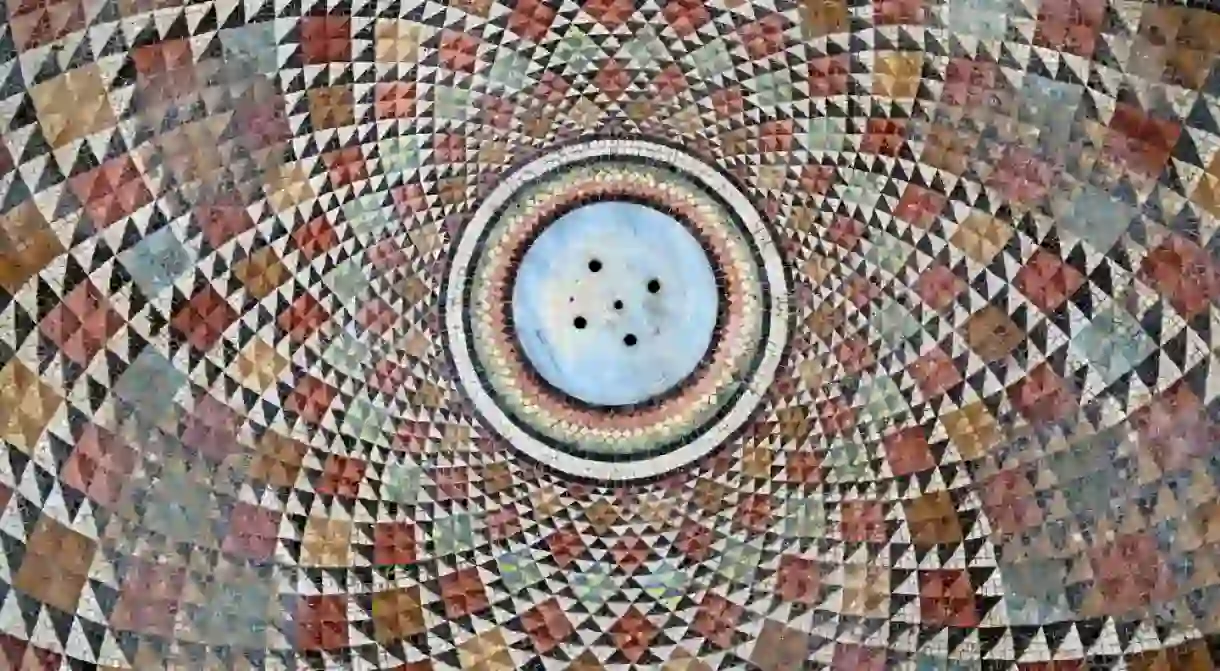The 5 Most Beautiful Places in Palestine

With Israel and the Palestinian territories constantly littering the media with turmoil and conflict, there is one remaining aspect of stability: the region’s wealth of beauty is undisturbed by the tension and well worth a visit for historians and admirers of the aesthetic alike.
Hisham's Palace
Ruins

Hisham’s Palace was built between the years 720 and 750 AD. It is also known as Hirbet al-Mafjar, which roughly translates to “flower water ruins.” This enticing palace lies nestled in the desert and, though it takes its name from Hisham bin Abdel Malek, many have argued that its decor and structure are more suited to Hisham’s nephew and successor, Al-Walid bin Yazid. Walid led quite the playboy lifestyle, and his palace suited it, being used predominantly for luxury. For lovers of beauty, the mosaics in the palace are truly unmissable.
Abraham Mosque
Mosque

One of the oldest holy sites in the world The Abraham mosque, or the Ibrahimi mosque, is one of the most influential holy sites in the world. It is believed to be the burial site of Abraham, Sarah, Isaac, Jacob, Rebecca, and Leah. As such, its influence reaches all three of the major religions, being sacred to Christians, Jews, and Muslims alike. However, its religious influence isn’t its only asset; the intimidatingly large mosque has an overwhelming intensity that is truly unforgettable. The interior is grand, ornate, and an impressive sight to say the least.
Herodyon
Church, Park, Ruins

Atop a truncated, cone-shaped hill, Herod the Great left his mark. In the Judaean Desert, a palace, fortress, and small town can be found, built between 15 and 23 AD. Excavations of the artificial hill, which is the peak of the Judaean Desert, revealed some remarkable discoveries. The ruins of Herodyon still remain and, like the fictitious city of Atlantis, have an unearthly quality to them. Imagining the construction of this incredible site is amazing enough, but witnessing it is almost overwhelming. Visitors will surely find themselves aghast at the fascinating ruins of this unique fortress.
Monastery of the Temptation
Monastery

The Mount of Temptation is where Jesus is said to have been tempted by the devil during his 40 days of fasting. On the sheer face of this mountain, a monastery has been built. The monastery blends into the stone of the mountain, and has visitors astounded when they finally catch a glimpse of what lies in wait for them across the desert. With spectacular views from the monastery and equally spectacular views of the monastery from below, this was bound to make the list of the most beautiful places in Palestine. Being built into a cliff, the monastery has a fantastical, otherworldly quality to it.
Ruins at Sebastia
Ruins

In the stunning region of Nablus, the ruins of Sebastia are just waiting to be enjoyed by locals and tourists alike. The site features the ruins of Samaritan palaces, Byzantine churches and Hellenic watchtowers. In the same vicinity, tourists can see the Ottoman railway station before settling down for the night in one of the renovated Byzantine rooms. Visiting the ruins is truly a unique experience, where the tall ruins of pillars, houses, and temples will have you slipping into another era entirely.













